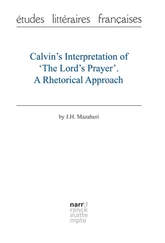Helge Fauskanger - J.R.R. Tolkien’s Lord’s prayer and Hail Mary in Quenya - Syntactical and Etymological Analysis
Здесь есть возможность читать онлайн «Helge Fauskanger - J.R.R. Tolkien’s Lord’s prayer and Hail Mary in Quenya - Syntactical and Etymological Analysis» весь текст электронной книги совершенно бесплатно (целиком полную версию без сокращений). В некоторых случаях можно слушать аудио, скачать через торрент в формате fb2 и присутствует краткое содержание. Жанр: Языкознание, на английском языке. Описание произведения, (предисловие) а так же отзывы посетителей доступны на портале библиотеки ЛибКат.
- Название:J.R.R. Tolkien’s Lord’s prayer and Hail Mary in Quenya: Syntactical and Etymological Analysis
- Автор:
- Жанр:
- Год:неизвестен
- ISBN:нет данных
- Рейтинг книги:5 / 5. Голосов: 1
-
Избранное:Добавить в избранное
- Отзывы:
-
Ваша оценка:
- 100
- 1
- 2
- 3
- 4
- 5
J.R.R. Tolkien’s Lord’s prayer and Hail Mary in Quenya: Syntactical and Etymological Analysis: краткое содержание, описание и аннотация
Предлагаем к чтению аннотацию, описание, краткое содержание или предисловие (зависит от того, что написал сам автор книги «J.R.R. Tolkien’s Lord’s prayer and Hail Mary in Quenya: Syntactical and Etymological Analysis»). Если вы не нашли необходимую информацию о книге — напишите в комментариях, мы постараемся отыскать её.
J.R.R. Tolkien’s Lord’s prayer and Hail Mary in Quenya: Syntactical and Etymological Analysis — читать онлайн бесплатно полную книгу (весь текст) целиком
Ниже представлен текст книги, разбитый по страницам. Система сохранения места последней прочитанной страницы, позволяет с удобством читать онлайн бесплатно книгу «J.R.R. Tolkien’s Lord’s prayer and Hail Mary in Quenya: Syntactical and Etymological Analysis», без необходимости каждый раз заново искать на чём Вы остановились. Поставьте закладку, и сможете в любой момент перейти на страницу, на которой закончили чтение.
Интервал:
Закладка:
Álame tulya úsahtienna mal áme etelehta ulcullo : násie :
And lead us not into temptation, but deliver us from evil. Amen.
(The Quenya text has no initial "and".) Álameis the imperative particle á with a suffixed negation # la "not" followed by yet another suffix, the now familiar # me "us", here occurring without the dative ending - n : this is a direct object, not an indirect one. tulyastem of the verb lead , which combined with álame forms the imperative phrase "do not lead us". úsahtienna"into temptation", clearly # úsahtie "temptation" + the allative ending - nna "to, into". mal but (wholly different from previously attested words of the same meaning), ámeimperative particle á + suffixed pronoun # me "us". etelehtastem of verb "deliver, free", connecting with áme to form an imperative phrase deliver us . ulcullo from evil , incorporating the ablative ending - llo "from". The noun "evil" to which it is attached can be either # ulcu or * ulco with a stem # ulcu - (see Lexical Commentary). Conceivably this word could mean "the evil one" (the devil) rather than "evil" as an abstract. The Greek phrase tou ponerou can be translated both ways, and some modern versions do prefer the alternative wording: "Save us from the evil one" (Matthew 6:12 in The Jerusalem Bible , which version Tolkien himself translated a minor part of: Letters:378). In Ephesians 6:14-16, most translators take tou ponerou as referring to the devil: "Stand your ground…always carrying the shield of faith so that you can use it to put out the burning arrows of the evil one." We cannot be certain what precise meaning Tolkien intended # ulcu (or * ulco ) to have, "evil" or "evil one". The shape of the word itself may suggest the latter, but if it is not an abstract, we would probably expect the article i "the" before it to express " the evil one" – unless it is actually a name of the "Evil One", in which case we would have expected it to be capitalized.
Some versions of the prayer slip in a doxology at the end: "For thine is the kingdom, and the power, and the glory, for ever. Amen" (Matthew 6:13; cf. 1 Chronicles 29:11 and Revelation 4:11). However, these words do not occur in some of the oldest Greek manuscripts: Modern Greek master texts (like those prepared by Westcott/Hort, or the Aland edition) typically omit them, as do a number of modern translations. Of this spurious doxology, Tolkien only included the final "amen!" in his Quenya version of the prayer: násie, probably literally *"this is [so]" (see Lexical Commentary). Evidently it was a concern of his that the text he translated should be genuine. From a linguistic point of view we may regret the omission of the full doxology, for it would have been interesting to see how Tolkien would have handled the independent possessive pronoun thine (would the long-hypothesized form * elya have been confirmed?)
Here the syntax relating to the imperative particle á may be summarized. The Lord’s Prayer provides four examples: ámen anta "give us", ámen apsene "forgive us", áme etelehta "deliver us" and (with both a negation - la - and a pronominal ending - me suffixed) álame tulya "lead us not". To these examples may be added á hyame for "pray" in Hail Mary (see below). In the latter example we see the imperative particle by itself, without suffixes, as we do in the sentence á vala Manwe "may Manwe order it" (or literally *"do rule Manwe") in WJ:404. The particle also occurs by itself, in the variant (short) form a , in a sentence from the Cormallen Praise: A laita te, laita te , "bless them, bless them".
The verb that follows the imperative particle á (standing alone or with negations/pronouns suffixed) will appear as an uninflected stem. Anta , etelehta , tulya are examples of A-stems, or "derived" verbs (which must also be the case with vala "rule" in á vala Manwe ). On the other hand, apsene and hyame would seem to represent "basic" verbs, the essential component of which is just a naked root with no suffixed verbal ending like - ta or - ya (in apsene we may have an element prefixed to the root, but that is irrelevant). Such a verb adds an - e , evidently representing primitive short - i , when the verb appears as an infinitival or uninflected "stem". Á hyame "pray!" may be compared to the phrase áva kare in WJ:371: "A longer form áva …which shows combination with the imperative particle * â , was commonly used as a negative imperative Don’t! , either used alone or with an uninflected verbal stem, as áva kare! " – a negative command "don’t do it!" (WJ:371). Kare here counts as the "uninflected verbal stem" of the verb kar - "make, do", itself representing the naked root kar (LR:362). The negation ( áva instead of á ) does not affect the syntax; one could certainly scramble the attested examples á hyame and áva kare to produce * áva hyame "don’t pray!" and * á kare "do!" The uninflected verbal stems coincide in form with certain tense-forms: an A-stem like anta , as well as the actually infinitival stems hyame and kare , could by their form also be examples of the aorist. However, when preceded by the imperative particle á (or its negated forms áva , ála ) such a form must be taken as infinitival/uninflected.
The Quenya versions of the Lord’s Prayer and Hail Mary reveal one new thing about the imperative particle: it easily attracts pronominal elements. The pronoun denoting the object of the imperative phrase (in accusative for a direct object or dative for an indirect object) may be directly suffixed to the imperative particle, before the verb follows. Hence we have for instance áme etelehta "deliver us", ámen anta "give (to) us". Yet the sentence a laita te "bless them" in LotR has the pronoun following the verb. We must assume that te "them" could also in this case have been suffixed to the imperative particle, so that "bless them!" would be expressed as * Áte laita , "do-them bless!" Conversely, in light of this example from LotR we must assume that the pronouns could have been placed after the verb also in the text before us: * á anta men "give us", * á apsene men "forgive us", á etelehta me "deliver us", * ála tulya me "do not lead us". Yet it may be a feature of Quenya grammar that when a short pronoun that functions as a direct or indirect object cannot be suffixed to this verb (which is perhaps always impossible in the case of an indirect/dative object), then the pronoun typically appears before the verb instead – even though the preferred word order is otherwise subject-verb-object rather than subject-object-verb. Compare such French constructions as je t’aime , though French is normally subject-verb-object and not subject-object-verb; the Quenya equivalent can be found in LR:61: Inye tye-méla "I love thee" with tye "thee" prefixed to the verb rather than following it. Even in Namárië (including the prose version) we have sí man i yulma nin enquantuva? for "who now will refill the cup for me?"; notice that the dative pronoun nin comes before the verb, though its equivalent "for me" in the English translation comes after it. It seems that when placed in front of the verb, such short pronouns easily glue themselves to a preceding particle when such is present. In light of the examples found in the text before us, an imperative "refill the cup for me!" would probably be * ánin enquate i yulma! with nin "for me" directly suffixed to the imperative particle.
Читать дальшеИнтервал:
Закладка:
Похожие книги на «J.R.R. Tolkien’s Lord’s prayer and Hail Mary in Quenya: Syntactical and Etymological Analysis»
Представляем Вашему вниманию похожие книги на «J.R.R. Tolkien’s Lord’s prayer and Hail Mary in Quenya: Syntactical and Etymological Analysis» списком для выбора. Мы отобрали схожую по названию и смыслу литературу в надежде предоставить читателям больше вариантов отыскать новые, интересные, ещё непрочитанные произведения.
Обсуждение, отзывы о книге «J.R.R. Tolkien’s Lord’s prayer and Hail Mary in Quenya: Syntactical and Etymological Analysis» и просто собственные мнения читателей. Оставьте ваши комментарии, напишите, что Вы думаете о произведении, его смысле или главных героях. Укажите что конкретно понравилось, а что нет, и почему Вы так считаете.












